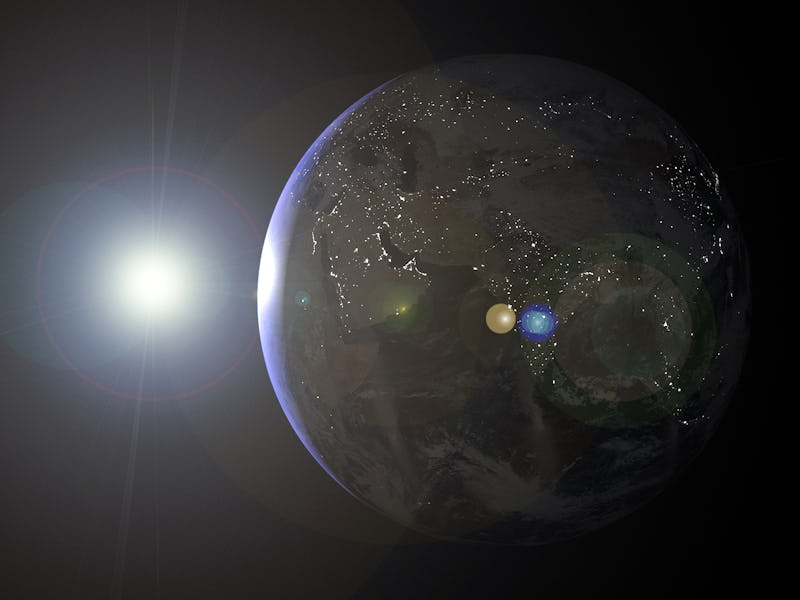A 30-Year-Old Treaty Proves Humans Can Still Save Planet Earth
The 1987 Montreal Protocol is still protecting us from climate change.

As the United States government goes out of its way to roll back clean Earth initiatives of the past, it’s easy to forget that sometimes good policies can lead to meaningful change — and it can stick. A new paper published in the journal Geophysical Research Letters shows that a 30-year-old international agreement to fix the hole in the ozone layer not only worked but also transformed global emissions — with major benefits for preventing climate change.
Back in 1985, scientists discovered that a class of non-toxic, non-reactive chemicals called chloroflourocarbons (CFCs) were ripping a hole in the ozone, a key layer of the atmosphere. These chemicals had been used by appliance companies for decades in refrigerators, aerosol cans, and other products that needed safe gases and had long been considered harmless.
Ozone, a gas made of molecules of three oxygen atoms, floats high above sea level and protects the Earth’s surface from harmful ultraviolet radiation, which can cause skin cancer and a host of other problems. CFCs, scientists learned, interact with ozone, snatching away one of the oxygen atoms from each molecule. The result is regular O2, which does nothing to protect against the sun. Each year, the ozone layer over Antarctica thinned significantly. And it didn’t take scientists long before they realized that thinning was spreading.
Nations of the world acted quickly: By 1987, an agreement to phase out CFCs, known as the Montreal Protocol, had been drawn up and signed, and by 1989 it was in force. Since then, it’s been revised eight times and ratified by 197 countries.
The Montreal Protocol has been successful. Researchers have known for a while now that the hole in the ozone layer is closing up. The Geophysical Research Letters paper, however, is the first to show broadly how the Montreal Protocol has changed the scope and nature of global emissions.
CFCs, along with the less harmful hydrochlorofluorocarbons (HCFCs) that replaced them, and the hydrofluorocarbons (HFCs) that have since replaced those, are powerful greenhouse gases. They trap heat in the atmosphere, contributing to climate change.
But even as one harmful gas has replaced another, the total global greenhouse effect of all gases in this category has declined sharply. Between 2008 and 2014, CFC emissions declined by two-thirds, HCFC emissions declined by one-half, and the level of HFCs released into the atmosphere remained about constant. The resulting change in greenhouse effect was the same as preventing about 375 billion pounds (or 187 million tons) of carbon dioxide from the atmosphere — about 5% of what the United States emits each year.
The Montreal Protocol alone won’t save the planet from climate change in the same way it healed the hole in the ozone layer. But this study shows that efforts in one area can have meaningful knock-on effects in others — and that when there’s real global political will to get some environmental work done, amazing things can happen.